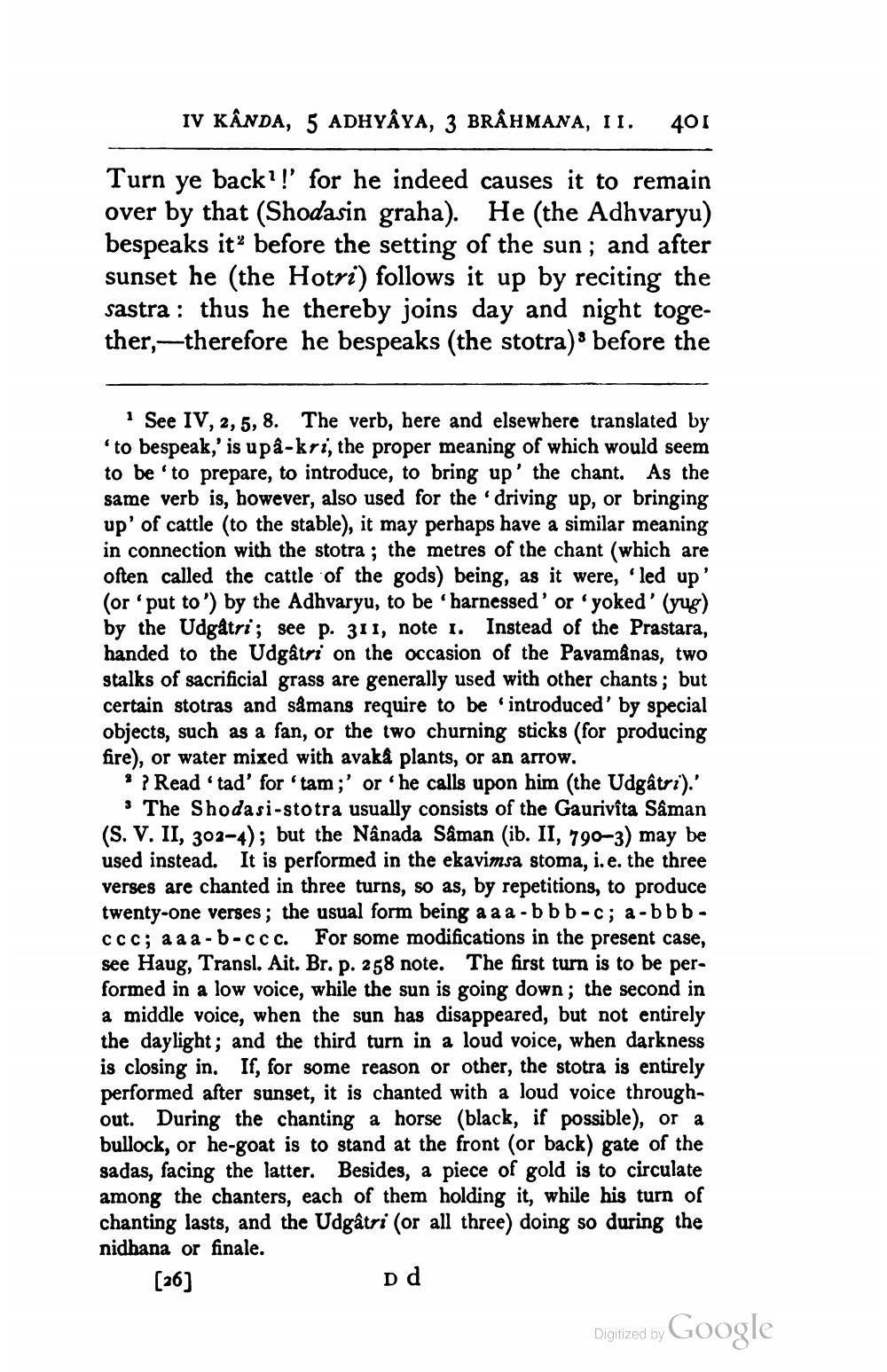________________
IV KÂNDA, 5 ADHYAYA, 3 BRÂHMANA, 11.
401
Turn ye back?!' for he indeed causes it to remain over by that (Shodasin graha). He (the Adhvaryu) bespeaks it before the setting of the sun; and after sunset he (the Hotri) follows it up by reciting the sastra : thus he thereby joins day and night together,—therefore he bespeaks (the stotra): before the
See IV, 2, 5, 8. The verb, here and elsewhere translated by to bespeak,' is upå-kri, the proper meaning of which would seem to be 'to prepare, to introduce, to bring up' the chant. As the same verb is, however, also used for the driving up, or bringing up' of cattle (to the stable), it may perhaps have a similar meaning in connection with the stotra ; the metres of the chant (which are often called the cattle of the gods) being, as it were, 'led up' (or put to ') by the Adhvaryu, to be 'harnessed' or 'yoked' (yug) by the Udgatri; see p. 311, note 1. Instead of the Prastara, handed to the Udgâtri on the occasion of the Pavamânas, two stalks of sacrificial grass are generally used with other chants; but certain stotras and såmans require to be introduced' by special objects, such as a fan, or the two churning sticks (for producing fire), or water mixed with avakå plants, or an arrow.
? ? Read 'tad' for 'tam;' or 'he calls upon him (the Udgâtri).'
· The Shodasi-stotra usually consists of the Gaurivita Saman (S. V. II, 303-4); but the Nânada Saman (ib. II, 790–3) may be used instead. It is performed in the ekavimsa stoma, i.e. the three verses are chanted in three turns, so as, by repetitions, to produce twenty-one verses; the usual form being a a a-bbb-c; a-bbbccc; a aa-b-ccc. For some modifications in the present case, see Haug, Transl. Ait. Br. p. 258 note. The first turn is to be performed in a low voice, while the sun is going down; the second in a middle voice, when the sun has disappeared, but not entirely the daylight; and the third turn in a loud voice, when darkness is closing in. If, for some reason or other, the stotra is entirely performed after sunset, it is chanted with a loud voice throughout. During the chanting a horse (black, if possible), or a bullock, or he-goat is to stand at the front (or back) gate of the sadas, facing the latter. Besides, a piece of gold is to circulate among the chanters, each of them holding it, while his turn of chanting lasts, and the Udgâtri (or all three) doing so during the nidhana or finale. [26]
Dd
Digitized by Google




